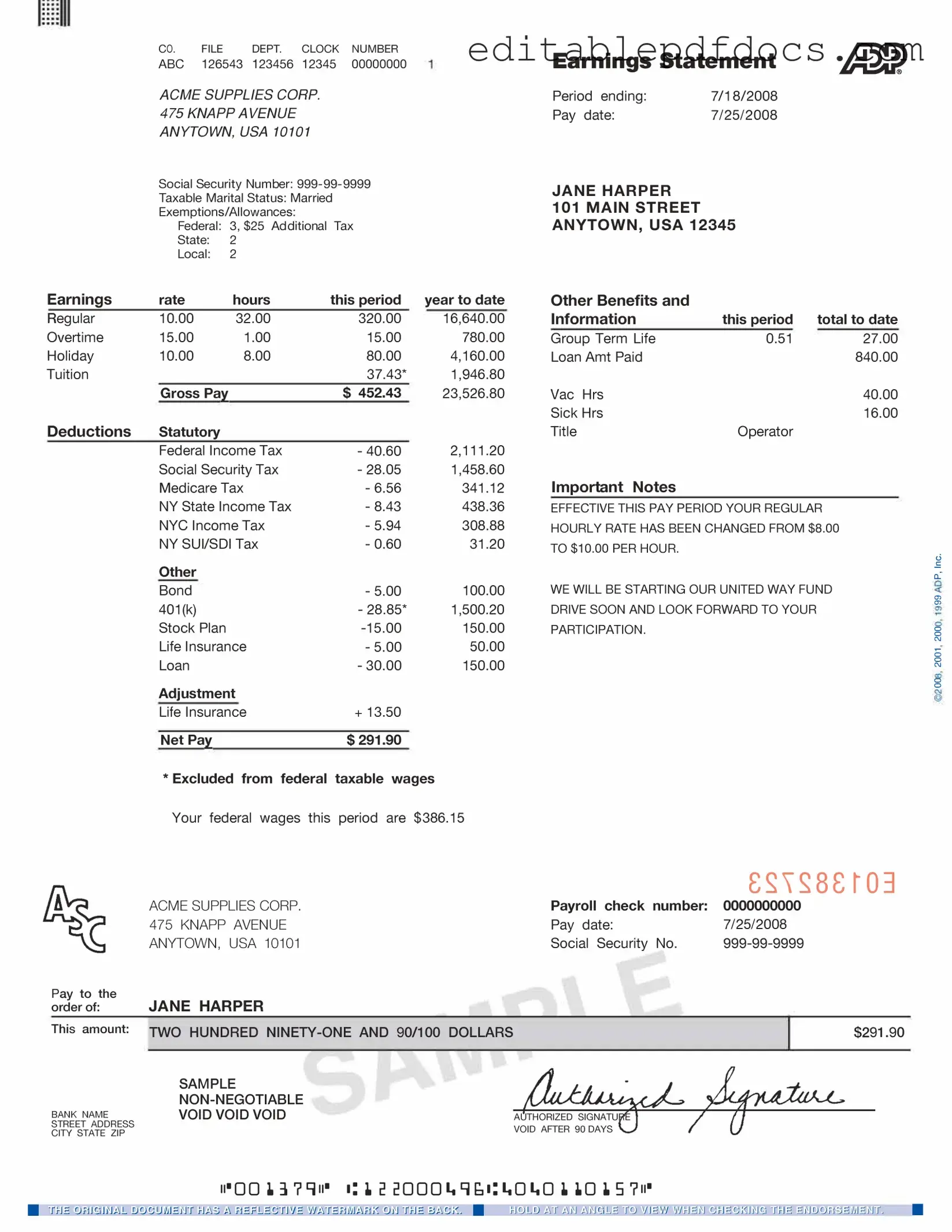Completing the ADP Pay Stub form can be straightforward, but many individuals make common mistakes that can lead to confusion or delays. One frequent error is providing incorrect personal information. This includes misspelling names or entering the wrong Social Security number. Such inaccuracies can cause issues with payroll processing.
Another mistake is neglecting to update information after a life change. For example, if someone changes their address or marital status, failing to reflect this on the pay stub can lead to complications in tax reporting and benefits. Keeping records current is essential for accurate payroll information.
Some individuals overlook the importance of verifying hours worked. If the hours entered are incorrect, it can result in underpayment or overpayment. Always double-check the hours before submission to ensure accuracy.
In addition, many people do not review the deductions listed on their pay stub. Understanding what is being deducted from paychecks is crucial. Errors in deductions can affect take-home pay and tax obligations. It is advisable to compare deductions with previous pay stubs for consistency.
Another common error is ignoring the importance of the pay period dates. Entering the wrong dates can lead to confusion regarding pay cycles. Pay periods must align with the actual work performed to ensure accurate compensation.
Failing to include necessary documentation can also pose a problem. Some forms may require additional paperwork or signatures. Not providing these can delay processing and payment.
People sometimes forget to account for overtime hours. If applicable, these hours should be clearly indicated on the form. Miscalculating overtime can lead to disputes regarding pay.
Another mistake is not keeping a copy of the submitted pay stub form. Retaining a copy is important for personal records and can be useful for future reference. It is advisable to have documentation in case any discrepancies arise.
Lastly, many individuals do not seek assistance when needed. If there is uncertainty about how to fill out the form correctly, reaching out for help can prevent mistakes. Utilizing available resources can lead to a smoother payroll process.
